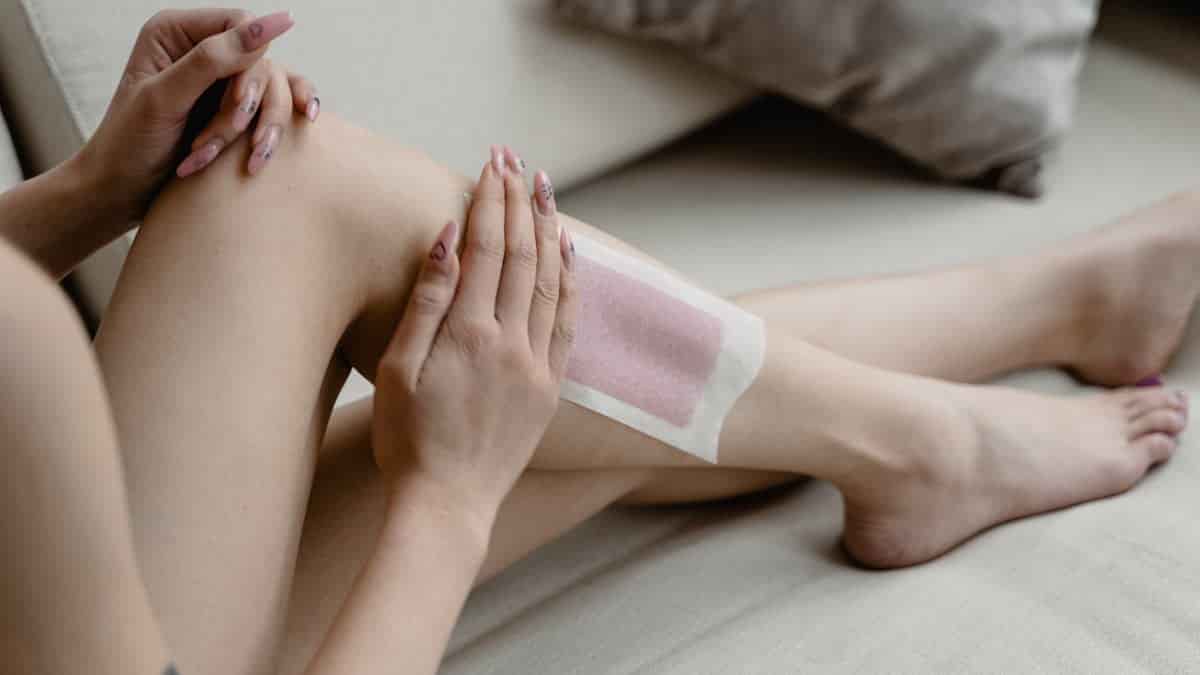Here is your complete guide to waxing before and after.
Introduction to Waxing Before and After
Are you dreaming of smooth, hair-free skin? Waxing is a popular choice for many seeking longer-lasting results than shaving. However, the key to a successful and satisfying waxing experience lies in understanding the waxing before and after process. Proper preparation can significantly reduce discomfort and ensure better results, while diligent aftercare prevents irritation and ingrown hairs. This comprehensive guide will delve deep into everything you need to know about waxing before and after, so you can achieve the best possible results and enjoy smooth, radiant skin for weeks. Understanding “waxing before and after” is the foundation for achieving optimal results.
Understanding Waxing
What is Waxing?
It is a method of hair removal that involves applying a sticky substance (wax) to the skin, which adheres to the hair. When the wax is quickly removed, it pulls the hair out from the root. There are two main types of wax:
- Hard Wax: This type hardens on its own and doesn’t require strips for removal. It’s often preferred for sensitive areas like the bikini line and face because it adheres more to the hair than the skin.
- Soft Wax: This type requires strips for removal. It is applied thinly to the skin, then a cloth or paper strip is pressed onto the wax and quickly pulled off, taking the hair with it. Soft wax is typically used for larger areas like legs and arms.
Why Choose Waxing?
It offers several advantages over other hair removal methods, such as shaving or using depilatory creams:
- Long-Lasting Results: It removes hair from the root, which means it takes longer for the hair to grow back. Most people experience smooth skin for 3-6 weeks after waxing.
- Finer Regrowth: Over time, regular waxing can lead to finer and sparser hair regrowth.
- Smooth Skin: It removes dead skin cells along with the hair, leaving your skin feeling smooth and exfoliated.
- Reduced Irritation: Unlike shaving, It eliminates the risk of razor burn and cuts.
Preparing for Waxing
Essential Pre-Wax Steps
Preparing your skin properly before waxing is crucial for minimizing discomfort and maximizing results. Here are some essential steps:
- Hair Growth Requirements: Ensure your hair is long enough for the wax to grip properly. The ideal length is about ¼ to ½ inch (6-12 mm). If your hair is too short, the wax won’t be able to adhere effectively, leading to patchy results. If it’s too long, it can be more painful.
- Exfoliation Techniques: Exfoliating 1-2 days before waxing helps to remove dead skin cells that can trap hair, leading to ingrown hairs. Use a gentle exfoliating scrub or a loofah to gently buff the skin. Avoid harsh scrubs that can irritate the skin.
- Skin Preparation:
- Cleanse: Wash the area to be waxed with a mild soap and water to remove any dirt, oil, or lotion.
- Dry Thoroughly: Ensure the skin is completely dry before waxing. Moisture can prevent the wax from adhering properly.
- Avoid Lotions and Oils: Do not apply any lotions, oils, or creams to the area on the day of your waxing appointment. These products can create a barrier that prevents the wax from gripping the hair.
Pain Management Tips
Waxing can be uncomfortable, especially for first-timers or those with sensitive skin. Here are some tips to help manage the pain:
- Over-the-Counter Pain Relief Options: Take an over-the-counter pain reliever, such as ibuprofen or acetaminophen, about 30 minutes before your appointment.
- Avoid Caffeine and Alcohol: These substances can increase sensitivity to pain.
- Relaxation Techniques: Practice relaxation techniques, such as deep breathing or meditation, to help calm your nerves before the appointment.
- Communicate with Your Waxer: Let your waxer know if you are feeling particularly sensitive or if you need them to take a break.
- Timing is Key: Avoid waxing right before or during your menstrual cycle, as your skin may be more sensitive.
The Waxing Process
In-Salon vs. At-Home
You have the option of getting waxed at a salon or doing it yourself at home. Each approach has its own advantages and disadvantages:
| Factor | In-Salon Waxing | At-Home Waxing |
|---|---|---|
| Pros | Professional expertise, less mess, more thorough results | More affordable, convenient |
| Cons | More expensive, requires scheduling appointments | Risk of injury, potential for uneven results, can be messy |
Step-by-Step Guide
Whether you choose to go to a salon or wax at home, here’s what you can expect during the process:
- Preparation: The skin is cleansed and dried. Some waxers may apply a pre-wax oil to protect the skin.
- Application: The wax is applied to the skin in the direction of hair growth.
- Removal: A strip of cloth (for soft wax) or the hardened wax itself (for hard wax) is quickly removed in the opposite direction of hair growth.
- Repeat: The process is repeated until all desired hair is removed.
- Aftercare: A soothing lotion or oil is applied to calm the skin.
Safety Precautions to Take:
- Always test the wax on a small area of skin to check for allergic reactions.
- Never wax over irritated or sunburned skin.
- Follow the instructions on the wax packaging carefully.
- Avoid double-dipping the applicator stick in the wax pot to prevent contamination.
Post-Wax Care
Immediate Aftercare Tips
Proper post-wax care is essential for preventing irritation, ingrown hairs, and other complications. Here are some immediate aftercare tips:
- Cool Compresses: Apply a cool compress to the waxed area to reduce redness and swelling.
- Avoid Heat: Avoid hot showers, saunas, and strenuous exercise for at least 24 hours after waxing. Heat can irritate the skin.
- Wear Loose Clothing: Wear loose-fitting clothing to allow the skin to breathe and prevent friction.
- Avoid Touching: Avoid touching the waxed area to prevent introducing bacteria.
- No Sun Exposure: Avoid direct sun exposure for at least 24 hours after waxing. It can make your skin more sensitive to the sun.
Long-Term Skin Care
- Moisturizing Routines: Moisturize the waxed area daily with a fragrance-free lotion to keep the skin hydrated and prevent dryness.
- Exfoliation Post-Waxing: Start exfoliating 2-3 days after waxing to prevent ingrown hairs. Use a gentle exfoliating scrub or a loofah to gently buff the skin. Exfoliate 2-3 times per week.
Avoiding Common Issues
- Ingrown Hairs: Ingrown hairs occur when hair grows back into the skin instead of out. Exfoliating regularly and moisturizing can help prevent ingrown hairs.
- Irritation: Redness, itching, and bumps are common side effects of waxing. Applying a soothing lotion or aloe vera gel can help reduce irritation.
Troubleshooting Common Problems
Addressing Redness and Irritation
- Apply a cold compress to the affected area to reduce inflammation.
- Use a soothing lotion or aloe vera gel to calm the skin.
- Avoid scratching the area to prevent further irritation.
- Wear loose clothing to allow the skin to breathe.
Read Also: Cream for The Feet.
Dealing with Ingrown Hairs
- Exfoliate the area regularly to help release trapped hairs.
- Use a warm compress to soften the skin and encourage the hair to grow out.
- Avoid picking at the ingrown hair, as this can lead to infection.
- Consider using an ingrown hair treatment containing salicylic acid or glycolic acid.
Read Also: Best Korean Eye Cream.
When to Seek Professional Help
In rare cases, it can lead to more serious complications, such as infections or burns. Seek professional medical help if you experience:
- Severe pain
- Excessive bleeding
- Signs of infection, such as pus or fever
- Burns or blisters
Read Also: PRP for Under Eyes.
FAQs About Waxing Before and After
Here are answers to some frequently asked questions about waxing:
| Question | Answer |
|---|---|
| How long does waxing last? | Waxing typically lasts 3-6 weeks, depending on your hair growth rate. |
| Can I wax if I have sensitive skin? | Yes, but choose a wax specifically formulated for sensitive skin and inform your waxer. |
| What should I avoid after waxing? | Avoid heat, sun exposure, tight clothing, and touching the waxed area. |
| How can I prevent ingrown hairs? | Exfoliate regularly and moisturize daily. |
| Is waxing painful? | Waxing can be uncomfortable, especially for first-timers, but the pain usually subsides quickly. |
Read Also: French Bikini Line.
Conclusion
Mastering the waxing before and after routine is the key to achieving smooth, radiant skin and minimizing discomfort. By following the tips and guidelines outlined in this article, you can ensure a successful and satisfying hair removal experience. Remember, proper preparation and diligent aftercare are essential for preventing irritation, ingrown hairs, and other complications. With the right approach, It can be a safe and effective way to achieve the smooth, hair-free skin you’ve always wanted. Understanding “waxing before and after” is not just about hair removal; it’s about caring for your skin and promoting its health.
Read Also: Extended Bikini Wax.
References and Resources:
- Waxing tips: Your before-and-after wax care guide – Dove
- The Ultimate Guide: Essential Pre-Waxing Preparations and Aftercare – Belle Brow Bar
- What to Do Before Waxing & Tips for After Wax Care – Nair
- Waxing 101: Your Ultimate Guide to Waxing Services – Marlo Beauty
- Pre and Post Waxing Guides – Street Smart Beauty
- Waxing Aftercare: The Complete Guide to Post-Wax Pampering – Waxing the City

